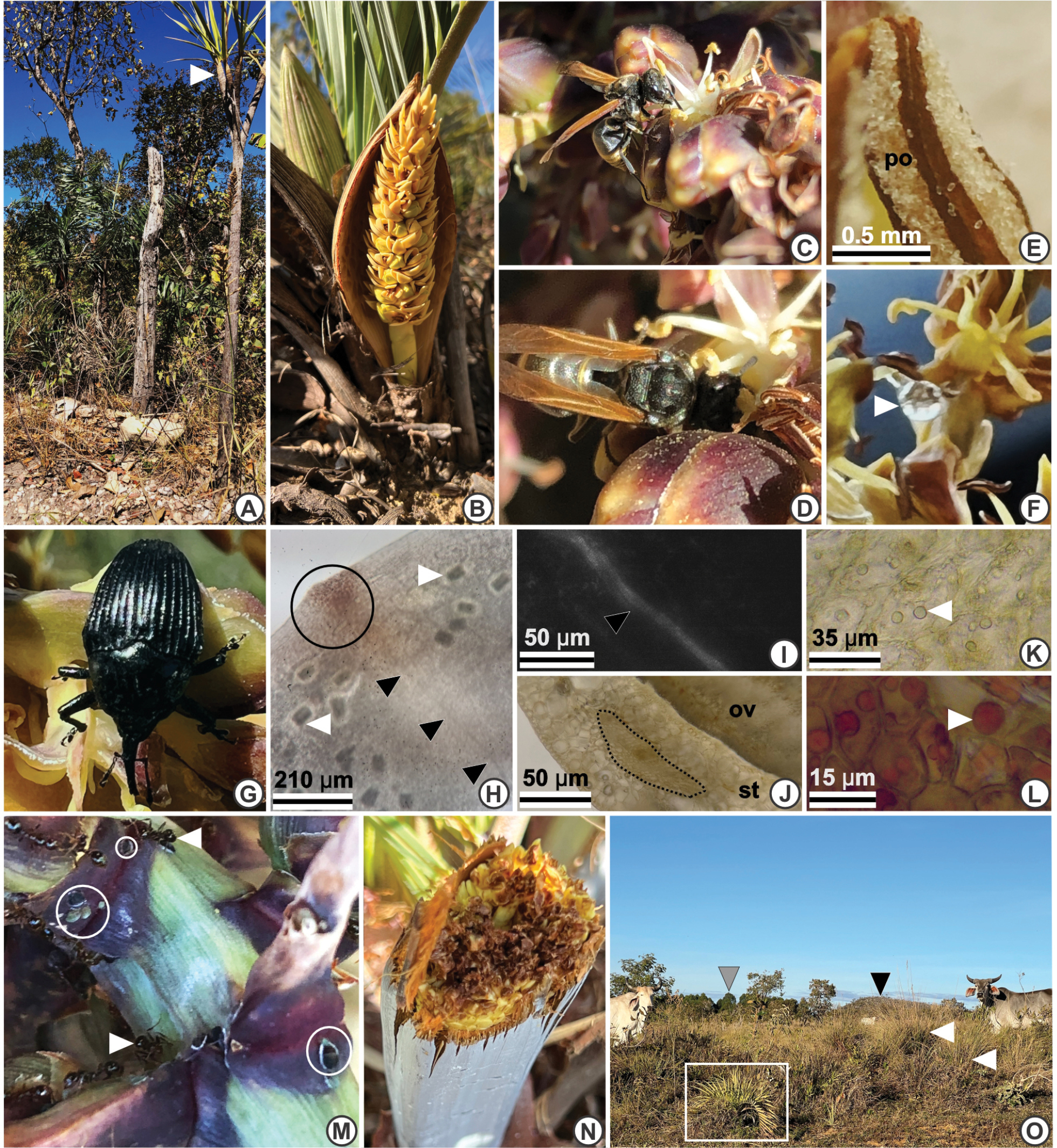
|
||
|
Habitat and morphoanatomical aspects of Butia soffiae with ecological implications and threats in the vicinity of the type population. A. Specimen of Velloziaceae (white arrowhead). B. Inflorescence of the endemic and rare Syagrus caerulescens. C. Bee visiting a stamen. D. Bee visiting a petal. E. Pollen (po). F. Droplet of nectar (white arrowhead). G. Beetle visiting a petal. H. Frontal view of staminodial ring: staminode (black circle), raphides (white arrowheads), and vascularisation (black arrowheads), LM. I. Detail of H: vascularisation (black arrowhead) under polarised light, LM. J. Cross-section of the staminode’s vascularisation (black dotted), LM. Ovary (ov). Staminode (st). K. Frontal view of staminode showing the oil-like droplets (white arrowhead). L. Sudan staining of lipophilic compounds (white arrowhead). M. Infructescence: aphids (white circles) and ants (white arrowheads). N. Inflorescence at pre-anthesis grazed by cattle. O. Landscape view of a pasture nearby the type population showing a rocky outcrop (black arrowhead), a Eucalyptus sp. plantation (grey arrowhead), cattle, and non-native grasses (white arrowheads). Butia soffiae (white rectangle) in the foreground. Photographs by Bruno F. Sant’Anna-Santos. |